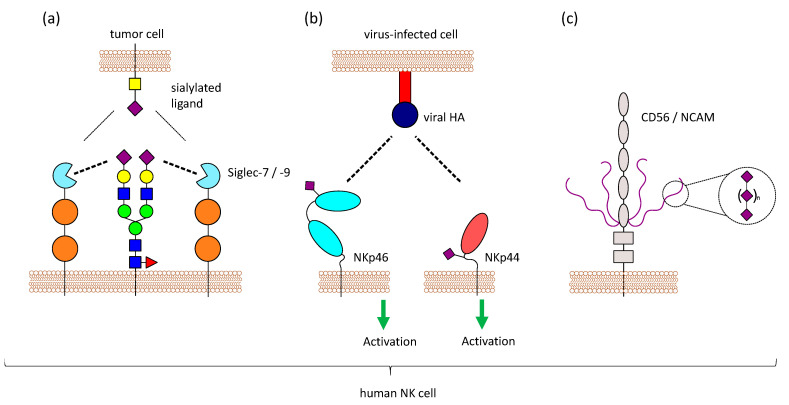Figure 3.
Sialic acids on NK cells. NK cells have sialic acids on their surface, which can influence NK cell functions in different ways. (a) Siglecs can not only bind to molecules on other cells (trans), but also to molecules on the same cell (cis). Masking can regulate Siglec function, since trans-ligands have to compete with the masking ligands present on NK cells. (b) NKp46 and NKp44 are sialylated, and it has been shown that these activating receptors interact with viral proteins like HA in a sialic acid-dependent manner. Virus-infected cells producing viral HA can be detected by NK cells via NKp44 and NKp46. (c) Furthermore, NK cells express CD56/NCAM, which carries a special form of glycosylation called polySia (long chains of sialic acid molecules attached to via α-2,8 linkage). PolySia on NCAM has been well studied in the central nervous system, where it is involved in regulating cell adhesion, but the function of this modification on NK cells is still unknown.

